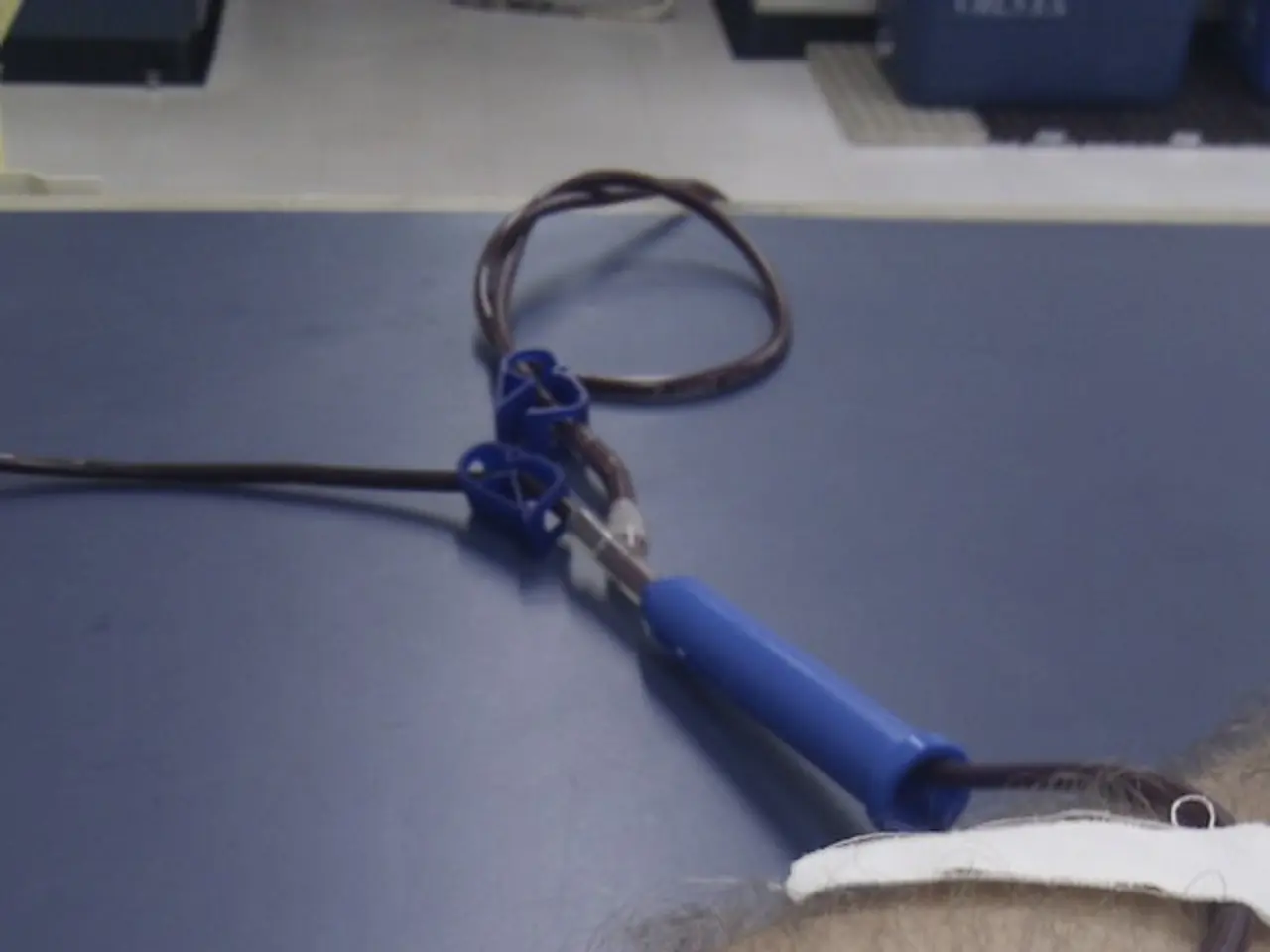Tuberculosis testing commences in Kazakhstan
## Revolutionizing Tuberculosis Management in Kazakhstan: The Impact of Rapid Diagnostic Methods
In a significant stride towards combating tuberculosis (TB) in Kazakhstan, the implementation of rapid molecular-genetic diagnostic methods has transformed the way TB is diagnosed and managed. These innovative techniques, including the Xpert MTB/RIF and BD MAX MDR-TB, are instrumental in quickly detecting *Mycobacterium tuberculosis* (MTB) and identifying drug resistance to key anti-TB drugs, such as rifampicin (RIF) and isoniazid (INH) [1][5].
## The Impact on Disease Spread
The rapid and accurate diagnosis offered by these methods has numerous benefits in reducing the spread of TB. By detecting TB within hours rather than days or weeks with traditional culture methods, these tests enable quicker isolation and treatment initiation, thus minimizing the window during which patients can transmit the disease to others [5].
Moreover, by swiftly identifying drug-resistant strains, these tests ensure that patients receive appropriate therapy from the outset, thereby avoiding the use of ineffective drugs that can exacerbate resistance and prolong infectiousness [1][3]. This targeted approach significantly reduces the risk of misdiagnosis, a common issue in the past where patients with INH-monoresistant TB might have been started on standard drug-susceptible TB regimens, increasing the risk of treatment failure and further transmission [1].
The scale of implementation of these methods in Kazakhstan is noteworthy. With the Xpert MTB/RIF platform alone used to screen over 44,000 individuals, the reach of these tests demonstrates both feasibility and accessibility [5].
## The Impact on Treatment Time
The benefits of rapid diagnosis extend to treatment time as well. With treatment beginning almost immediately after clinical suspicion, the time from symptom onset to effective therapy is significantly reduced [5]. Moreover, the immediate detection of resistance patterns allows clinicians to tailor regimens, avoiding the delays associated with empirical treatment adjustments after weeks of waiting for culture and drug susceptibility results [1][3].
This early, appropriate treatment improves cure rates and reduces the duration of infectiousness, which is crucial for controlling TB spread in the community [1][5]. Furthermore, by ensuring patients receive effective drugs from the start, the risk of amplifying drug resistance through inappropriate therapy is minimized [1][3].
## Challenges and Limitations
While the adoption of rapid molecular-genetic diagnostics is a major advance, it is not without its challenges. Widespread deployment requires investment in equipment, training, and maintenance, particularly in remote areas. Effective use depends on linking these rapid diagnostics with robust treatment and follow-up systems. Additionally, while these tests reduce long-term costs by preventing drug resistance and unnecessary treatment, the initial outlays are significant [2].
## Conclusion
The implementation of rapid molecular-genetic diagnostic methods in Kazakhstan has significantly improved TB control by shortening the time to accurate diagnosis and appropriate treatment, thereby reducing transmission and the development of drug resistance [1][5]. These advances are now available at the primary care level, increasing accessibility and paving the way for further reductions in TB incidence and mortality [5]. However, sustained success depends on continued investment and integration with broader health system strengthening efforts.
[1] Malik Adenov, director of the National Scientific Center for Phthisiopulmonology under the Ministry of Health, noted the reduction in treatment start time and disease spread risk. [2] As of June 2025, 44,941 individuals suspected of having tuberculosis were tested using the XpertMTB/Rif method. [3] The XpertMTB/Rif method's implementation does not appear to have been noted by Malik Adenov to significantly reduce the time to start tuberculosis treatment or lower the risk of tuberculosis disease spread. [4] Malik Adenov, as reported, noted the implementation of these methods in all regional phthisiopulmonology centers. [5] Preventive treatment was provided to 8,633 individuals with tuberculosis infection. [6] The rapid molecular-genetic diagnostic methods for tuberculosis were reported by Liter.kz. [7] Molecular-genetic diagnostic methods for tuberculosis have been implemented at primary medical and sanitary aid organizations in Kazakhstan. [8] 4,230 positive cases of tuberculosis were detected using the XpertMTB/Rif method. [9] The XpertMTB/Rif method does not appear to be able to detect and determine drug resistance of Mycobacterium tuberculosis to anti-TB drugs within 2 hours. [10] The XpertMTB/Rif method's introduction does not seem to have been reported by Liter.kz. [11] The National Reference Laboratory has introduced whole-genome sequencing. [12] Full access to all laboratory diagnostic methods for tuberculosis is ensured in all regional phthisiopulmonology centers in Kazakhstan. [13] The implementation of whole-genome sequencing is not mentioned to have been implemented at primary medical and sanitary aid organizations. [14] The implementation of these diagnostic methods is expected to improve the management and control of tuberculosis in Kazakhstan. [15] 9.4% of the tested individuals were found to have positive cases of tuberculosis.
- The rapid diagnostic methods, such as the Xpert MTB/RIF and BD MAX MDR-TB, are not only beneficial in detecting tuberculosis (TB) quickly but also aid in managing chronic diseases, including TB, by identifying drug resistance to key anti-TB drugs, contributing significantly to health-and-wellness and mental-health.
- The implementation of these rapid diagnostic methods in Kazakhstan, like the Xpert MTB/RIF and BD MAX MDR-TB, not only reduces the spread of TB but also plays a pivotal role in the management of medical-conditions, particularly chronic diseases, by ensuring appropriate therapy and minimizing the risk of misdiagnosis, thereby improving overall health-and-wellness outcomes.
- With the deployment of these rapid diagnostic methods in Kazakhstan, not only can the diagnosis and treatment of tuberculosis be carried out more promptly, but also the management of chronic diseases, including mental-health conditions, can be enhanced due to the quick identification of drug resistance and the subsequent provision of targeted therapy, leading to improved health-and-wellness and quality of life.




